Emerald Physics EP4.7 Loudspeaker: The Follow UP!
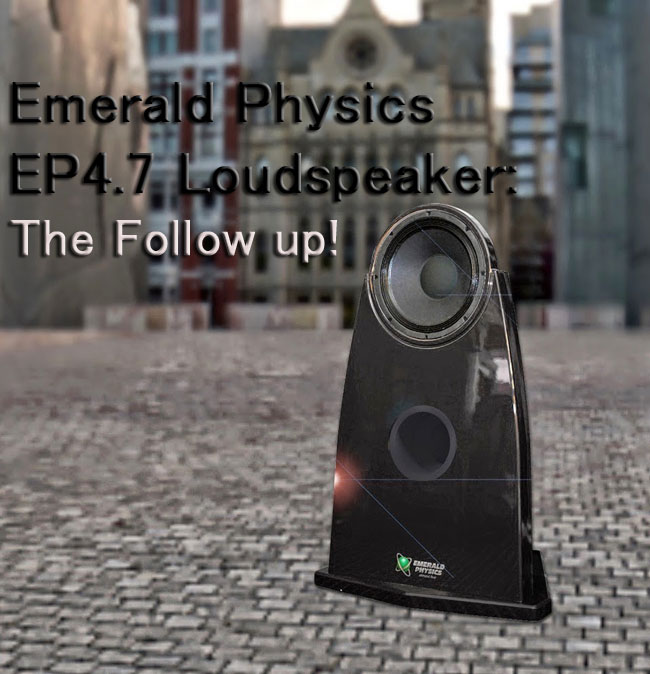
 When the Emerald Physics EP 4.7 speakers arrived at my house on a large pallet, I knew I was in for a treat – and a bit of a backache. Whether it was a stroke of luck or divine intervention, our postman happened by and cheerfully helped me get the big speaker boxes into the building. Thanks Chris!
When the Emerald Physics EP 4.7 speakers arrived at my house on a large pallet, I knew I was in for a treat – and a bit of a backache. Whether it was a stroke of luck or divine intervention, our postman happened by and cheerfully helped me get the big speaker boxes into the building. Thanks Chris!The EP 4.7’s were handsomely dressed in the optional 8 stage hand-painted automotive Tri-coat finish, a glossy upgrade from the standard satin black. Truth be told, my wife nicknamed them ‘the tombstones’ to distinguish between other speakers in the room and my brother-in-law said I should put R.I.P. in the title of the review. I countered ‘If EP offered an engraving option, this might be the one audio component you actually could take with you!’ Thankfully, they do sound ‘almost live’ as their tag line suggests.
The baby brother of the EP 2.7 top of the line model, the EP 4.7, with it’s single 15” open baffle woofer for extended bass response, has the ability to run without need of a sub, with awesome low frequency extension. The EP 4.7 doesn’t share a single part from the original CS2 series of products, and comes with the Special Edition midrange/tweeter crossover – each side’s woofer runs directly off a channel of your amp(s). The EP 4.7 efficiency is rated at 95db.
Controlled dispersion is why most of the sonic deficiencies of a room above 300Hz are minimized. Emerald Physics uses a carefully calculated Lens mounted to the front of the tweeter (you can see this if you take a flashlight and look through the dust cap). According to Walter and Mark Schifter: ‘This ‘Lens’ controls and shapes the launch patters of the tweeter which literally does not allow the mids and highs to ‘spill’ against the walls of the room. Hence our term “Controlled Dispersion.’
The 4.7 is a true 3-way, bi-amplified, dipole, controlled directivity speaker in a smaller more room-friendly size. It’s new polyester diaphragm tweeter offers improved speed and detail and each speaker’s single 15” woofer moves 80% more air, delivering almost as much bass as the dual 15’s of older EP models. Okay, enough ad copy.
Walter Liederman, the owner of Emerald Physics, purchased the company about 5 years ago. He also owns LSA (another speaker company) and his retail business, Underwood HiFi, sells both brands consumer direct. We met over the phone when I called inquiring about system set up for the EP 4.7’s. He gave me a brief, friendly how-to, offering bits of information about the company along the way. When asked if the speaker acts in any way like a horn, as I had heard the speaker so described, his response was ‘Yes, in some ways as we use the midrange as a wave guide to control the dispersion of the tweeter so it matches the dispersion of the midrange driver to help remove the rooms acoustics.’
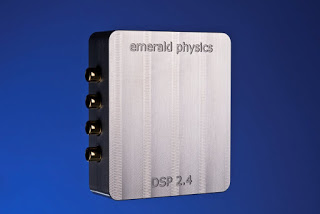
The EP 4.7’s are boxless speakers with passive crossovers that receive the audio signals for the highs and mids from the included DSP 2.4 processor, an active interface, that those routes audio signal to your system’s amplifiers. The woofers receive their signals directly from your amplifiers (no external Passive X/O).
The DSP 2.4 allows a wide range of power amplification to be used with the EP 4.7’s. The 4.7’s can run off one or two stereo amplifiers, off four mono amplifiers or a multi-channel amp. While having the same make and model amplifiers might be ideal, Schifter can work with the customer remotely or the factory can send updated curves (in .xml file protocol). It the customer wishes to do this they have to buy a simple piece of software from mini-DSP (called Advanced 2-Way) and Schifter can send the files easily. Schifter added ‘I pre-program everything first by asking a few questions (side wall – rear wall placement and how far apart they are at “tweeter-centers”…). I do all of the work here first initially. ANY Gain amps can be programmed to work. If you have amps already – I can make that work.’ Liederman commented: ‘The EP 4.7 speaker systems comes with a carefully programmed DSP by Mark Schifter. This DSP is meant to overcome some of the frequency response aberrations that are easy tuned. I’m also able to make subtle (but important) changes to gain and timing.’
Liederman told me Emerald Physics is near-ready to roll out a new support feature at a very reasonable fee that will aid the user in adjusting any EP speaker system with the DSP 2.4. They are proposing this possible scenario: EP will send a user a package containing a microphone and their Travel Computer (to be returned, of course). The microphone is to be placed at the listening position and connected to the computer. Through this, Schifter can take over the system with a sharing piece of software (Team View) and literally program their DSP right in front of a customer’s eyes and ears. Various music samples will be played and analyzed and frequency contours adjusted for room correction thru the DSP 2.4 in real time at the Emerald Physics base to achieve the perfect sound for that listening room. The user will be asked how it sounds and if he wants a bit of a frequency tweak here or there to account for personal taste. Once the adjustments are completed they will be stored and can be retrieved from EP as needed.
I was unaware of the EP 4.7’s amplification needs prior to arrival. While I have a few nice amps, only two match and they are both mono. Power output needn’t be identical for use with Emerald Physics speakers, but the gain of the amps is critical. Schifter verified that he can match gains easily. Liederman pointed out that, if tube amplifiers are to be used to power the mids and highs, they should be very accurate in output – ie: think Acoustic Research over Conrad Johnson, with transistor amplifiers generally preferred over less accurate tube amps.
I borrowed a Lexicon 5-channel power amplifier to power the system, and listened with powering the EP 4.7’s it for a couple of weeks. In calling for help to resolve a connectivity issue, Schifter, the design guy as he referred to himself, responded promptly, offering any assistance he could provide. He offered to send two EP 100.2SE power amps and noted, with regard to the set up of EP speakers, that those who are computer literate can be directed to a graphic user interface at the EP miniDSP site where settings information can be passed back and forth. Schifter then reminded me that the Master Gain setting is important as there is a passive network working closely in tandem to the DSP and overall gain is necessary for a good system balance and for getting great sound out of these speakers. I remain impressed that both Walter Liederman and Mark Schifter are just a phone call away and so hands on.
Schifter, apologizing for his boldness, promised that the EP 100.2SE’s are ‘really extraordinary amps’ and would be a welcomed edition. I was pleased to learn that, most of the time, Schifter listens to and burns in the EP amplifiers for a few days prior to shipping out. I asked that he send two stereo amps out and anticipated a fun ride.
![]()
Listening with the Lexicon
While waiting for the arrival of the EP 100.2SE amps, I continued to listen with the Lexicon. This Lexicon 5-channel power amp is no slouch, producing 140 watts per channel at 8 ohms, all channels driven 20Hz to 20kHz producing plenty of power for these 95dB sensitive speakers. Once properly connected and powered up, the EP 4.7’s boldly announce their presence, producing ample bass and a fluid transparency with extreme ease. The sound the EP4.7’s produce is impressive in our 32’ x 42’ loft space. The lower end foundation reaching down to 28Hz with little effort, providing a extended blanket of low frequency that grounds the soundstage, allowing the higher frequencies work their magic.
Thru the Lexicon 5 channel power amp, Pink Floyd’s ’Wish You Were Here’ (EMI LTD 2011), hybrid SACD tracks ripped to 24-96 files and played from my iPad Air using the OnkyoHD app (with in-app purchase), the raspiness of Gilmour’s electric guitar is retained with pinpoint imaging and on a wide soundstage. The track. ‘Welcome To The machine’ greats us with spectacular dynamic machine-like sounds with great body and depth. The acoustic guitar is very full.
I experimented with the EP4.7’s with no toe-in and found the soundstage went wider but lost depth. With toe-in, the presentation was far better focused, more intimate and involving.
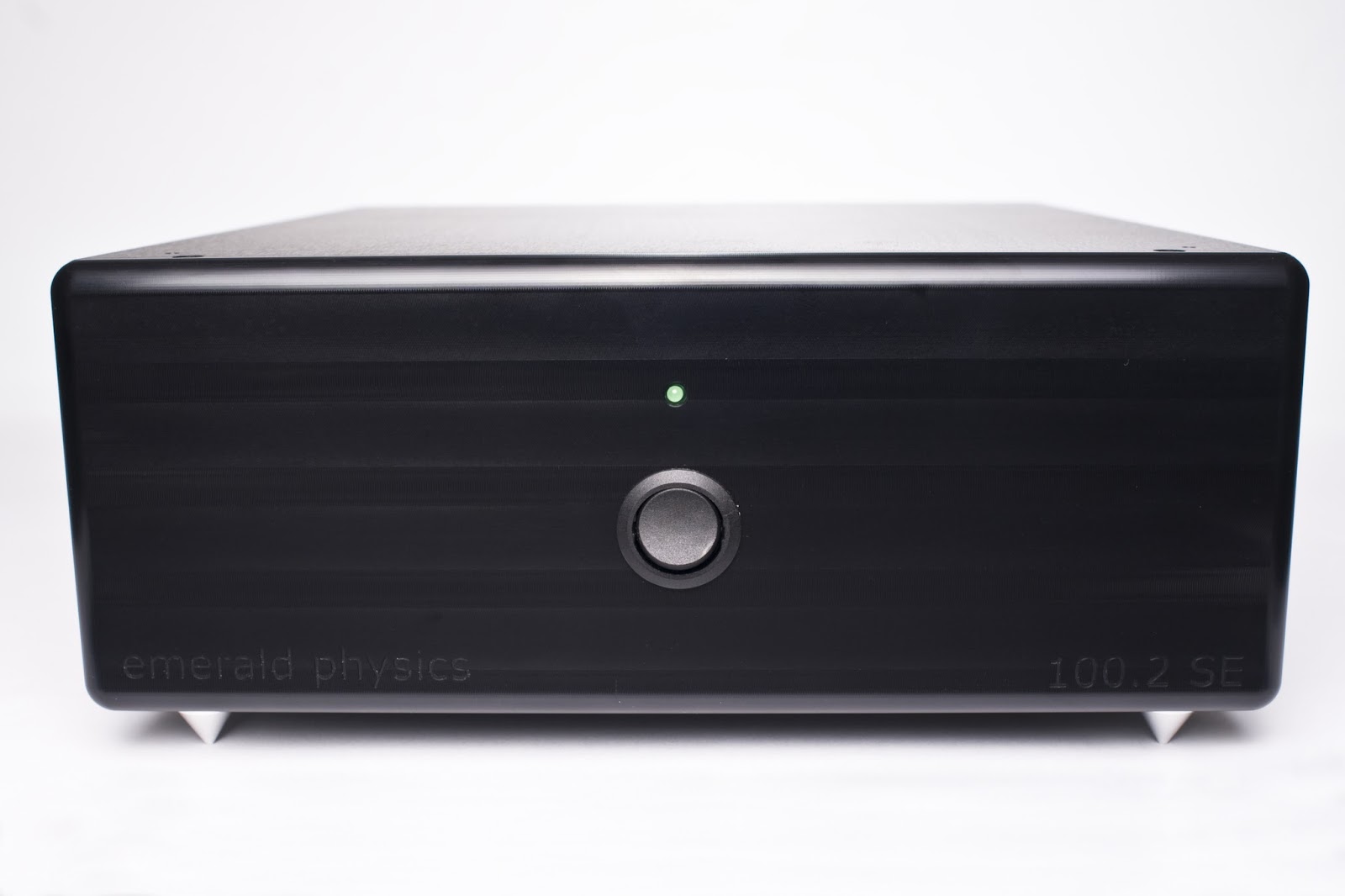
Enter the EP 100.2SE stereo amps
I received two EP 100.2SE stereo amplifiers the week after they shipped out, love their polished metal linear graphic finish and was quite surprised at their size and weight. Each digital amp, with it’s analog power supply and fully balanced design, is just 9.5”W x 4.25”H x 12.5”D with the dimensions of the permanent spikes and binding posts included – each weighing just 16.5 lbs. The 100.2SE amp is a made in the USA and the special edition version of the 100.2 offers a number of upgrades to the standard model. Switches on the rear of each amplifier allow stereo/mono selection as well as an optional ground lift. The power produced ranges from 100 watts into 8 ohms, 150 watts into 4 ohms, 275 watts in mono operation into 8 ohms and 450 watts in mono into 4 ohms (all ratings RMS), showing this Class D stereo amplifier has the power for nearly any installation, easily driving some difficult speakers according to reader comments on the EP website.
Listening with the EP 100.2SE stereo amps
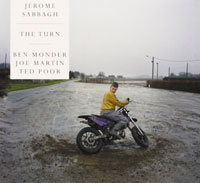 Cueing up Jerome Sabbagh’s Kickstarter project The Turn, digital files burned to CD, I found the EP 4.7’s to be warm, dynamic and textural. This system plays forcefully with a very pleasant, muscular appeal. The 4.7’s laid back and slightly dark tone is not at all aggressive and speaks with an authority that is commanding of attention. The EP 4.7/EP 100.2SE speaker/amp combination is listenable for hours on end, producing a sound that is punchy and provocative with a tube-like warmth. The low end is solid, making these boxless speakers appear larger than they are. Standing just shy of 39 inches, they fill our good-sized loft space quite easily and, with their slight backwards tilt, even sound good when standing. The speakers, at their 95dB sensitivity, take the 100wpc from the EP 100.2SE amps in stride, playing impressively at higher volumes with no apparent strain. I would say the EP 100.2SE stereo amps are quite a good match for the 4.7’s for most environments. Yes Mark Schifter, the EP 100.2SE’s are really ‘extraordinary’ amps and quite affordable for what they do.
Cueing up Jerome Sabbagh’s Kickstarter project The Turn, digital files burned to CD, I found the EP 4.7’s to be warm, dynamic and textural. This system plays forcefully with a very pleasant, muscular appeal. The 4.7’s laid back and slightly dark tone is not at all aggressive and speaks with an authority that is commanding of attention. The EP 4.7/EP 100.2SE speaker/amp combination is listenable for hours on end, producing a sound that is punchy and provocative with a tube-like warmth. The low end is solid, making these boxless speakers appear larger than they are. Standing just shy of 39 inches, they fill our good-sized loft space quite easily and, with their slight backwards tilt, even sound good when standing. The speakers, at their 95dB sensitivity, take the 100wpc from the EP 100.2SE amps in stride, playing impressively at higher volumes with no apparent strain. I would say the EP 100.2SE stereo amps are quite a good match for the 4.7’s for most environments. Yes Mark Schifter, the EP 100.2SE’s are really ‘extraordinary’ amps and quite affordable for what they do.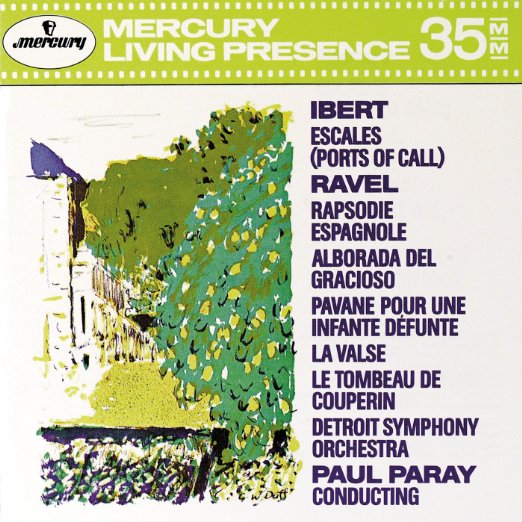 The CD of the Mercury Ibert’s ‘Escales (Ports of Call)’ with Paul Paray conducting the Detroit Symphony Orchestra (Mercury 1990) was up next. The highs were nicely dialed back conveying the romantic excitement of this wonderful piece. Dynamic interplay was presented effortlessly by these quickly responding nimble speakers and perky little amps. I keep referring to ‘warmth’ in my listening notes. Lush strings and playful woodwind textures and soaring melodic lines all rest firmly on a very nice bass foundation. There’s a noticeable dimension to the percussive string plucks in the string passages and both brass and bass lines are presented with considerable weight and depth. Dynamic passages pull power from the EP 100.2SE stereo amplifiers without any appearance of compression or soundstage collapse. Ravel’s ‘Rapsodie Espagnole’ from the same disc followed. This haunting work, full of the mystery of a Hitchcock thriller, was both involving and romantic, it’s lush, low plucks and excitement amply conveyed thru this speaker and amp combination.
The CD of the Mercury Ibert’s ‘Escales (Ports of Call)’ with Paul Paray conducting the Detroit Symphony Orchestra (Mercury 1990) was up next. The highs were nicely dialed back conveying the romantic excitement of this wonderful piece. Dynamic interplay was presented effortlessly by these quickly responding nimble speakers and perky little amps. I keep referring to ‘warmth’ in my listening notes. Lush strings and playful woodwind textures and soaring melodic lines all rest firmly on a very nice bass foundation. There’s a noticeable dimension to the percussive string plucks in the string passages and both brass and bass lines are presented with considerable weight and depth. Dynamic passages pull power from the EP 100.2SE stereo amplifiers without any appearance of compression or soundstage collapse. Ravel’s ‘Rapsodie Espagnole’ from the same disc followed. This haunting work, full of the mystery of a Hitchcock thriller, was both involving and romantic, it’s lush, low plucks and excitement amply conveyed thru this speaker and amp combination.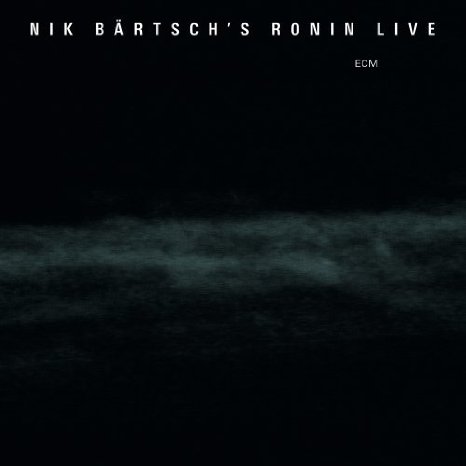 ‘Stoa’ on CD from Nik Bartsch’s Ronin (ECM 2006), is another favorite. I remain intrigued at every play with this band’s rhythmic mastery, interweaving challenging time signatures with often subtle changes in texture and tone in each ‘module’ they create. The opening piano is well defined as each key’s quick transient strike leads into a graceful decay. Highs are never strident and the subtlety of bells and percussion effects bring added depth to the space as the hypnotic bass lines and percussion work around the piano. The EP’s do a nice job conveying a depth to both the bass and drums, rendering dynamics within the subtle (and sometimes not) melodic shifts. Small delicate micro dynamics are clearly audible within larger dynamic swings. Bartsch’s Ronin simply rocks and the EP 4.7’s and EP100.2SE amps do a great job conveying the rhythmic nature and swing of this band.
‘Stoa’ on CD from Nik Bartsch’s Ronin (ECM 2006), is another favorite. I remain intrigued at every play with this band’s rhythmic mastery, interweaving challenging time signatures with often subtle changes in texture and tone in each ‘module’ they create. The opening piano is well defined as each key’s quick transient strike leads into a graceful decay. Highs are never strident and the subtlety of bells and percussion effects bring added depth to the space as the hypnotic bass lines and percussion work around the piano. The EP’s do a nice job conveying a depth to both the bass and drums, rendering dynamics within the subtle (and sometimes not) melodic shifts. Small delicate micro dynamics are clearly audible within larger dynamic swings. Bartsch’s Ronin simply rocks and the EP 4.7’s and EP100.2SE amps do a great job conveying the rhythmic nature and swing of this band. I’m a sucker for a womanly trill. Cécile McLorin Salvant’s new For One To Love (Mack Avenue 2015), purchased from HD Tracks as 24-96 files and played using the OnkyoHD app (with in-app purchase) on my iPad Air through the irDAC, shows Salvant in truly fine form, with her wide emotive range and wonderfully textural takes thru the entirety of this release. Each track seems to open up yet another avenue for Salvant to explore her vocal abilities. Nothing in this release sounds over-rehearsed – it all sounds like she’s having a great time. The EP’s all do a very nice job of conveying Salvant’s range and the quiet and inventive atmosphere created by the accompanying trio. Salvant is absolutely captivating here – a release not to be missed.
I’m a sucker for a womanly trill. Cécile McLorin Salvant’s new For One To Love (Mack Avenue 2015), purchased from HD Tracks as 24-96 files and played using the OnkyoHD app (with in-app purchase) on my iPad Air through the irDAC, shows Salvant in truly fine form, with her wide emotive range and wonderfully textural takes thru the entirety of this release. Each track seems to open up yet another avenue for Salvant to explore her vocal abilities. Nothing in this release sounds over-rehearsed – it all sounds like she’s having a great time. The EP’s all do a very nice job of conveying Salvant’s range and the quiet and inventive atmosphere created by the accompanying trio. Salvant is absolutely captivating here – a release not to be missed.On some female vocals, the EP 4.7’s gave a very slight hollow sheen to the occasional voice. This doesn’t concern me as Mark Schifter told me ‘this critical area is EASILY adjusted with the DSP 2.4 – in fact, other than bass tweaks (room related) this is the spot where I find himself adjusting for taste and listener palette.’ It’s all part of their service to keep a customer happy.
To give the EP 100.2SE amp a workout, I connected a single EP 100.2SE stereo amplifier to my Eminent Technology LFT-8b reference speakers. The EP 100.2SE drove this 82db sensitivity pair of speakers to my highest listening level with ease, the volume knob just shy of the 12:00 position in our large room. The bass was tight and controlled and there was plenty of transient snap in the percussive delivery of the various instruments. The sound was harmonious with great pacing and the bass had a resident growl that was quite thrilling. There was adequate depth to the stage and nice transparency to the production. The EP 100.2SE is a great Class D stereo amp with power that defies it’s modest stature.
Final Thoughts
The Emerald Physics EP 4.7 is an extraordinary speaker capable of producing beautify sound with authority, power and with a transparency that is nothing less than a pleasure to listen to. The EP 100.2SE amplifiers are handsome and powerful enough for most applications. Emerald Physics is clearly a company that aims to please, offering a line of boxless speaker systems and amplifiers that should appeal to both audiophile and music lovers alike at competitive prices.
Addendum
After this Emerald Physics speaker and amplifier review was over, and the article handed in for publication, I contacted Schifter to speak a bit about the amp in relation to a different product review, it was then that Schifter allowed himself to crow with enthusiasm for his product. His spirited observations were so infectious that adding these comments to this review was a no brainer, since I came away from my experience with the EP100.2SE drawing these same conclusions.
Schifter said ‘The 100.2SE has an uncanny ability to present music in a relaxed manner – with the highs “properly weighted’ and not wispy like what I hear with other Class D Amps. Oh yes – it has the bass that Class D is famous for – but the Power Band (1000Hz to 500Hz) is a MONSTER with this amp – and (yet) the mids are sensuous and touchable. Really glorious and bold, but not in the slightest veiled manner like Class D can easily do – – – nor does it have the glassy highs that are often part of the discussion even with the BEST Class D has out there. This 100.2SE is a Giant Killer – and thanks to Liederman he is getting this amp into the hands of music lovers at a wonderfully and holy fair price (Wally is good that way)…“
Mark was on a roll, adding “Walter did not rush me with this amp – he left John Leverault and me to get it right. It’s a wonderful product born of simple philosophy – we like Linear Power Supplies which surely do cost more, etc. etc. – but I feel this is one of the reasons why the 100.2SE rocks. In short… I love this amp…” As I brought up some vocals I was about to play, speculating how this amp would handle them. Mark replied that they would be rendered “in a glorious way…Plenty of meat – not thread bare and wispy – good weight thru the mids and highs IMHO… Oh, and simply incredible bass – controlled and defined.” Mark, I couldn’t agree more.
Throughout my time with the EP100.2SE, I was impressed with the amplifier’s ability to present a realism missing from my other solid state amps. This amp offers great musicality, plenty of dynamics and a nicely defined bass response – and I found the amp worked quite well with different speakers, from smaller to larger and both efficient and inefficient designs. I hope to keep one of these amplifiers around for a while. I think it’s thoughtful design, availability and accessibility will be appreciated in future reviews.


greg voth
EP 4.7 Specifications from Dave Thomas’s review (here):
System Type: 3-way, Bi-amplified Dynamic Dipole – DSP equalized
Frequency Range: 28Hz–22kHz -1dB/+.5dB from target curve
Frequency Linearity: +/- 1dB from 100Hz-20kHz from target curve
Impedance: 8 Ohms nominal bass / 8 ohms midrange/tweeter
Max Power input: 150W RMS, 300W program
Sensitivity: 95dB 2.83V @ 1M @ 1kHz
Drivers: High Frequency: 1 inch exit Polyester compression driver
Mid Frequency: Custom Emerald Physics 12 inch paper cone coaxial
Mid Frequency: Custom Emerald Physics 12 inch paper cone coaxial
Low Frequency: Custom Emerald Physics 15 inch paper cone
Crossover: Special Ed. Mid/high–Passive outboard 3rd order acoustic filter @ 900Hz.
Low/Mid –External DSP Asymmetrical active network @ 250Hz.
Frequency contour: Digital equalization – Emerald Physics DSP 2.4
Standard Finish: Automotive 8 stage Tri-coat finishes in 5 colors
Optional Finishes: Ancient Cocobolo and Santos Rosewood faux wood Tri-coat
Dimensions: 38.75”H x 22”W x 3”D (Baffle) (15” with rear base)
Weight: Net: 65 lbs each, Shipping: 80 lbs each
Speakers, DSP crossover and two external passive crossovers included
Price: $6,995/pr
– – –
EP 100.2SE Amplifier specs:
Special Edition version of 100.2
Fully balanced design
100 watts RMS @ 8 ohms
150 watts RMS @ 4 ohms
275 watts RMS mono operation
450 watts in mono @ 4 ohms
2 ohm stable
Copper RCA & XLR inputs
Extremely efficient (~93%)
Digital amp with custom analog power supply
Upgraded caps, resistors and inductors
Beautiful upgraded metal chassis
Copper binding posts
Input impedance @ 1KHz ohms 19k single ended/ 38k balanced
Output impedance @ 1KHz ohms:
Damping factor: >80
THD: .1%
Input Sensitivity for 1W/8ohms (V): 90mw SE/45mw in mono
Input Sensitivity for Maximum Power (V): 2.5V
Nominal Voltage Gain into 8 Ohms (dB): 30dB SE/ 36dB mono
S/N Ratio Ref. Rated Power (dB): 104dB
S/N Ratio Ref. 1W/8 Ohms (dB): 85dB
Made in USA
3 year warranty
Dimensions: 9.5″W x 3.5″H x 10.25″D
Dimensions (with spikes and binding posts): 9.5″W X 4.25″ H x 12.5″ D
Shipping dimensions: 12.5″ x 14.5″ x 6.5″
Weight: Net- 16.5 pounds, Shipping weight: 17.5 pounds
Retail $2200.00 On sale for a limited time at $1280.00
– – –
Contact:
Emerald Physics
Walter Liederman
2150 West 6th Ave
Unit I
Broomfield, CO 80020
770-667-5633
Email: underwoodwally@aol.com
Website: http://www.emeraldphysics.com
Underwood Hifi Inc.
Walter Liederman
770-667-5633
fax 770-216-1666
Stereo Times Masthead
Publisher/Founder
Clement Perry
Editor
Dave Thomas
Senior Editors
Frank Alles, Mike Girardi, Key Kim, Russell Lichter, Terry London, Moreno Mitchell, Paul Szabady, Bill Wells, Mike Wright, Stephen Yan, and Rob Dockery
Current Contributors
David Abramson, Tim Barrall, Dave Allison, Ron Cook, Lewis Dardick, Dan Secula, Don Shaulis, Greg Simmons, Eric Teh, Greg Voth, Richard Willie, Ed Van Winkle, and Rob Dockery
Music Reviewers:
Carlos Sanchez, John Jonczyk, John Sprung and Russell Lichter
Site Management Clement Perry
Ad Designer: Martin Perry





Be the first to comment on: Emerald Physics EP4.7 Loudspeaker: The Follow UP!